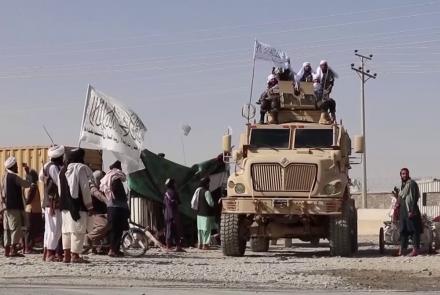Solar year 1400 will be considered an especially eventful time for Afghanistan, as the country’s peace process failed, the Western-backed republic government collapsed, and US-led NATO forces exited after two decades of military presence.
Former president Ashraf Ghani planted a so-called peace tree on the first day of 1400 at the Arg (presidential palace), but the negotiating teams of the former Afghan government and the Islamic Emirate failed to reach a political settlement.
The US announced it would withdraw its troops--and would do so unconditionally.
In mid-August the Islamic Emirate swept into power for the second time.
Discussion about the formation of a coalition government and the removal of Ghani from power were part of the talks between Afghan politicians and the US. The US was represented by then special envoy for Afghanistan, Zalmay Khalilzad. But Ghani and his team were strongly critical of these proposals and called for election or at least a Loya Jirga (National Assembly) as the only way to hand over the power to the next administration.
The High Council for National Reconciliation, led by then chairman Abdullah Abdullah, failed to make any breakthroughs for a political settlement between the two sides.
On August 15th, Ghani and his close aids fled the country.
According to former government’s officials and politicians, a delegation of the Afghan government was expected to visit Doha to facilitate the transition of power, but Kabul collapsed.
“We were set to got to Doha in the afternoon or evening of the (same) day,” former president Hamid Karzai told TOLOnews in a special interview.
The Islamic Emirate said Ghani’s fleeing was a reason for their forces to enter Kabul: in order provide security.
US and allied foreign troops began a rapid evacuation of their remaining forces, as well as foreign nationals and local staff.
The Kabul airport was overwhelmed with tens of thousands of people seeking to leave the country.
The last US service member, Maj. Gen. Chris Donahue, left Afghanistan on August 31st.
“At 12:00 that night, they (US troops) took off in their last flight from this airport and left,” Islamic Emirate’s spokesman Zabiullah Mujahid told reporters at the Kabul airport.
The head of the Pakistan intelligence agency-- ISI--was the first foreign official to visit Kabul after the Islamic Emirate swept into power.
Government institutions gradually became active following the announcement of the cabinet of the Islamic Emirate, but the current Afghan government has yet to be recognized by any foreign country, despite a humanitarian crisis affecting millions of people.


Comment this post